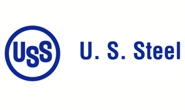Steel Mills

U.S. Steel Commits to Lower Greenhouse Gas Emissions
Written by Sandy Williams
November 14, 2019
U.S. Steel announced on Wednesday a new target for reducing greenhouse gas emissions intensity. As part of its “best of both” strategy, U.S. Steel said it will reduce its global greenhouse gas emissions intensity 20 percent by 2030, based on 2018 baseline levels. Emissions intensity is measured by the rate of carbon dioxide equivalents emitted per ton of finished steel shipped. The goal will apply to the company’s global operations.
“Committing to a global greenhouse gas intensity reduction target is central to U.S. Steel’s strategy to become a world-competitive ‘best of both’ integrated and minimill steel company,” said U.S. Steel President CEO David Burritt. “These reductions will be equivalent to the amount of CO2 being generated by more than 850,000 average-sized homes each year. By creating targeted carbon reduction initiatives to accelerate our transformation toward a future of sustainable steel, we create value for all stakeholders.”
U.S. Steel plans to achieve its goal through the use of electric arc furnace steelmaking at Fairfield Works and at Big River Steel. U.S. Steel currently owns 49.9 percent of BRS and anticipates acquiring the rest within four years. EAF production uses recycled scrap steel to produce finished steel.
Further carbon intensity reductions are expected to come from the company’s introduction of state-of-the-art endless rolling and casting technology and construction of a cogeneration facility at its Mon Valley Works announced in May, as well as implementation of ongoing energy efficiency measures, continued use of renewable energy sources and other process improvements.
Kevin Zeik, Ph.D., senior research fellow of innovation at U.S. Steel said: “The carbon intensity reduction target announced today reflects our commitment to continuous improvement in production efficiency and builds on our industry-leading XG3 advanced high-strength steel. This technology enables automakers to manufacture lighter weight vehicles that meet federal Corporate Average Fuel Economy (CAFE) standards with reduced carbon emissions. As part of our innovation efforts, we continue to look at new steelmaking technologies including those that can further reduce carbon emissions as those technologies mature.”

Sandy Williams
Read more from Sandy WilliamsLatest in Steel Mills

Nucor’s Topalian lauds Trump’s trade policies, downplays impact
Nucor’s top exec Leon Topalian said the benefit of the current administration’s aggressive trade policies “trumps” any risk of potentially higher raw materials prices.

SSAB reports higher production, shipments
But profits slipped vs. last year.

Nucor earnings slump in first quarter, but better times seen ahead
Nucor’s profits fell precipitously in the first quarter, but the company has a rosier outlook for the following quarter.

Nucor names Batterbee, Bledsoe to HR roles
Nucor Corp. has promoted Thomas J. Batterbee to the position EVP of human resources and talent and appointed Elizabeth Bledsoe to the newly created position of president of human resources and talent.

Millett sees tariffs, CORE case benefiting SDI
Steel Dynamics' top exec thinks Trump’s tariff policies, as well as the results from the recent CORE case, will prove advantageous to the Fort Wayne, Ind.-based steelmaker and aluminum company.
